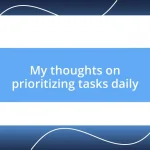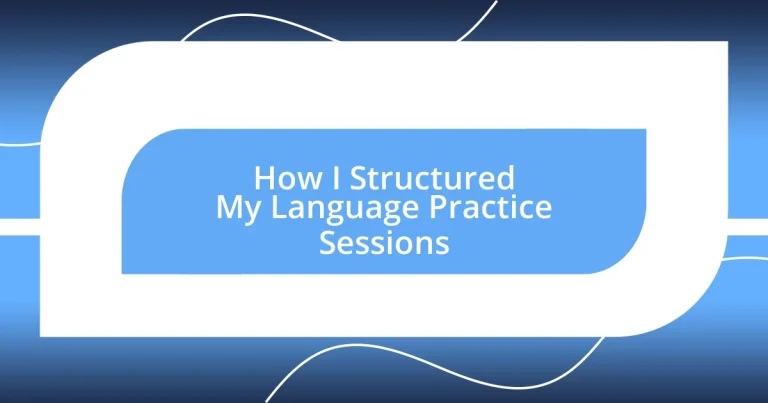Key takeaways:
- Setting clear language goals and regularly adjusting them boosts motivation and engagement in the learning process.
- Designing a structured session plan with varied practice methods enhances effectiveness and prevents burnout in language practice.
- Tracking progress and leveraging community resources fosters a sense of accomplishment and helps maintain motivation throughout the language learning journey.
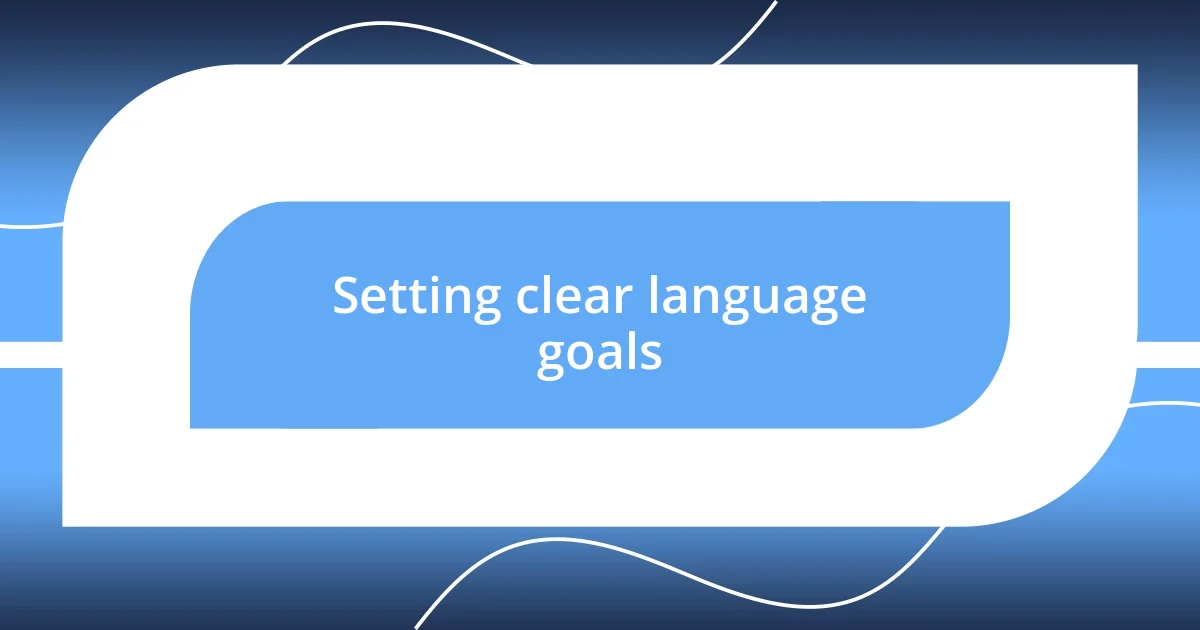
Setting clear language goals
Setting clear language goals is essential for effective language practice. I remember when I first started learning Spanish; it felt overwhelming without a clear target. I set a goal to hold a five-minute conversation within three months. That focused aim gave me direction and kept my motivation high.
Thinking about your own language journey, have you considered what specific skills you want to develop? For instance, if you want to improve your speaking abilities, set a goal to practice speaking with a native speaker at least twice a month. I found that those sessions not only boosted my confidence but also made the learning process much more enjoyable.
It’s important to regularly revisit and adjust your goals as you progress. Early on, I realized that my listening skills needed more attention. So, I shifted my objective to include listening to podcasts in Spanish daily. This flexibility helped me stay engaged and made my language practice sessions feel dynamic and personalized.
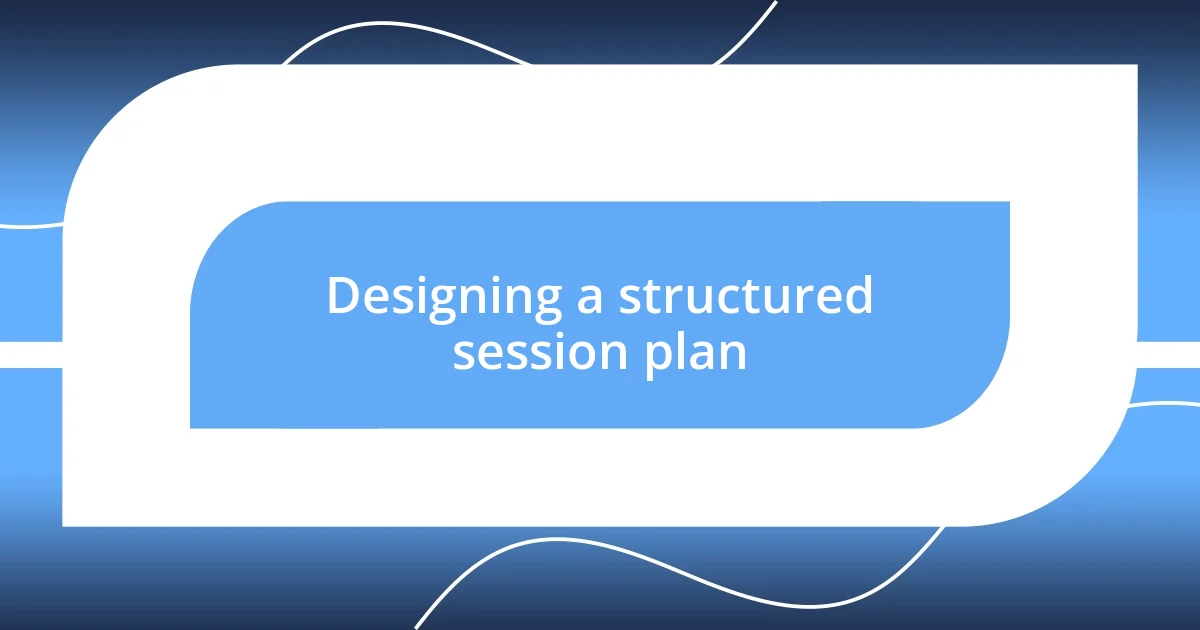
Designing a structured session plan
Designing a structured session plan is where the magic really happens in language learning. Over time, I discovered that a well-thought-out structure made my practice sessions not only more effective but also enjoyable. I found that breaking down my sessions into smaller, manageable chunks kept the learning experience fresh and prevented burnout.
Here’s a simple framework I followed to create my own structured session plans:
- Warm-up (5 mins): Start with light vocabulary games to get my brain in gear.
- Focused Skill Work (10 mins): Concentrate on one skill, like writing or speaking, using specific prompts or exercises.
- Application (15 mins): Engage in activities that use the targeted skill, such as conversation practice or listening to dialogues.
- Review (5 mins): Reflect on what I learned and note areas for improvement.
In my early sessions, I would sometimes overload myself with too many topics, leading to frustration. I vividly remember a session where I tried to tackle grammar, vocabulary, and conversation all in one go. It felt chaotic and left me feeling defeated. By shifting to a structured plan, I started completing sessions with a sense of accomplishment, which truly energized my learning journey.
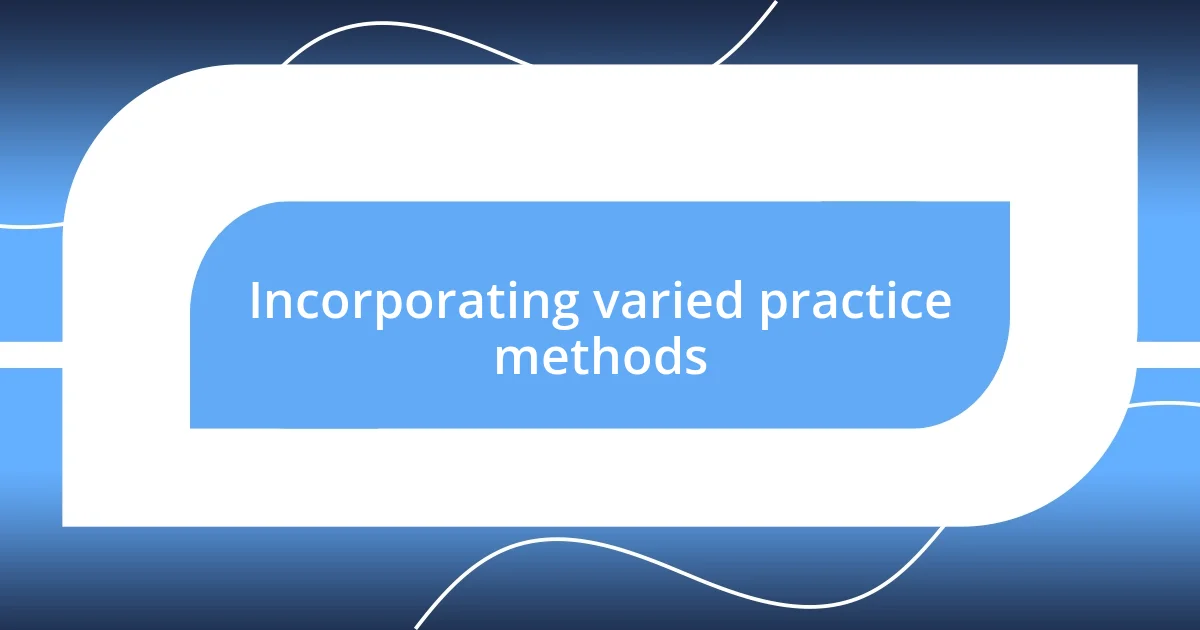
Incorporating varied practice methods
Incorporating varied practice methods has been a game-changer in my language learning experience. Initially, I relied on textbooks and worksheets, which felt monotonous after a while. I remember embracing digital tools like language apps, which added a fun element to my practice. For example, using Duolingo transformed those mundane vocabulary drills into engaging challenges that kept me excited about learning.
One of my favorite approaches is blending interactive activities with traditional methods. I started incorporating YouTube videos and language exchange platforms into my routine. Watching native speakers converse in various contexts helped me grasp the rhythm and nuances of the language. Plus, speaking with real people rather than just reading text made the practice feel authentic! Have you tried combining different methods in your sessions? I found that this dynamic blend not only improved my comprehension but made each session feel like a mini-adventure.
To keep things interesting, I often switched from structured lessons to creative outlets, such as journaling or recording myself speaking. I was surprised at how writing heartfelt entries in Spanish helped me retain vocabulary naturally. The beauty of varied practice methods is that they cater to different learning styles and keep you engaged. Mixing it up made me more resilient in the face of challenges, and I began to see progress in ways I hadn’t anticipated.
| Practice Method | Description |
|---|---|
| Textbooks & Worksheets | Structured but can feel monotonous; focus on grammar and vocabulary. |
| Language Apps | Interactive and gamified approach; allows for learning at your own pace. |
| YouTube Videos | Visual learning; exposure to native speakers enhances listening skills. |
| Language Exchange | Real conversational practice with native speakers; authentic learning experience. |
| Journaling | Creative outlet; reinforces vocabulary and encourages expression. |
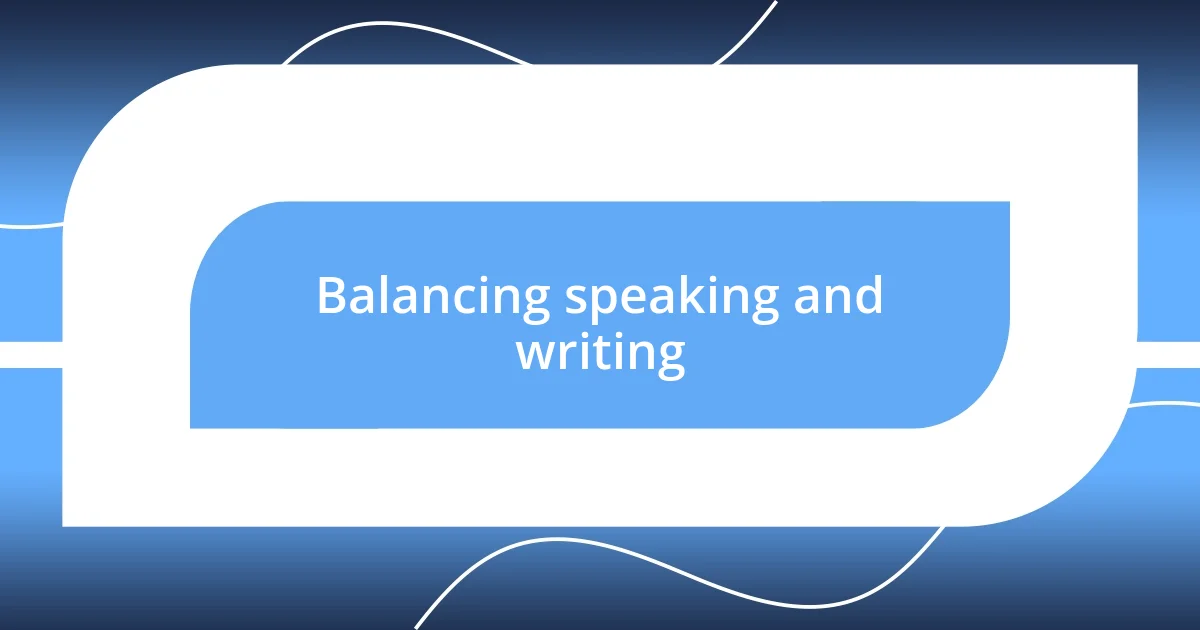
Balancing speaking and writing
Balancing speaking and writing has been crucial in my language practice. I discovered that dedicating equal time to each skill greatly enhanced my overall fluency. One memorable moment was when I spent a week focusing solely on writing assignments; I felt a noticeable improvement in my written expression. However, when it came time to converse, I realized I was struggling to keep up. This led me to incorporate speaking exercises into my sessions more deliberately. Have you ever found that focusing too much on one area left you unprepared for another?
To create a more balanced approach, I began setting aside specific times for both skills in each session. For instance, after warming up with vocabulary, I’d alternate between 10 minutes of free writing and 10 minutes of speaking practice. I remember feeling a rush of excitement during my first simulated conversation with a language partner after a solid writing exercise. The shift in focus gave me newfound confidence. It’s incredible how honing both areas shaped my ability to express ideas fluidly, don’t you think?
I also learned to intertwine writing and speaking by crafting short stories or dialogues before presenting them aloud. This method consolidated my learning and made the transition between skills seamless. I once wrote a dialogue about ordering food, only to perform it with a friend afterward. The adrenaline of speaking it felt exhilarating! Balancing the two practices not only enhanced my skills but also created a more holistic learning experience. It underscores the idea that language is a living entity, and to thrive, we must nurture all its facets.
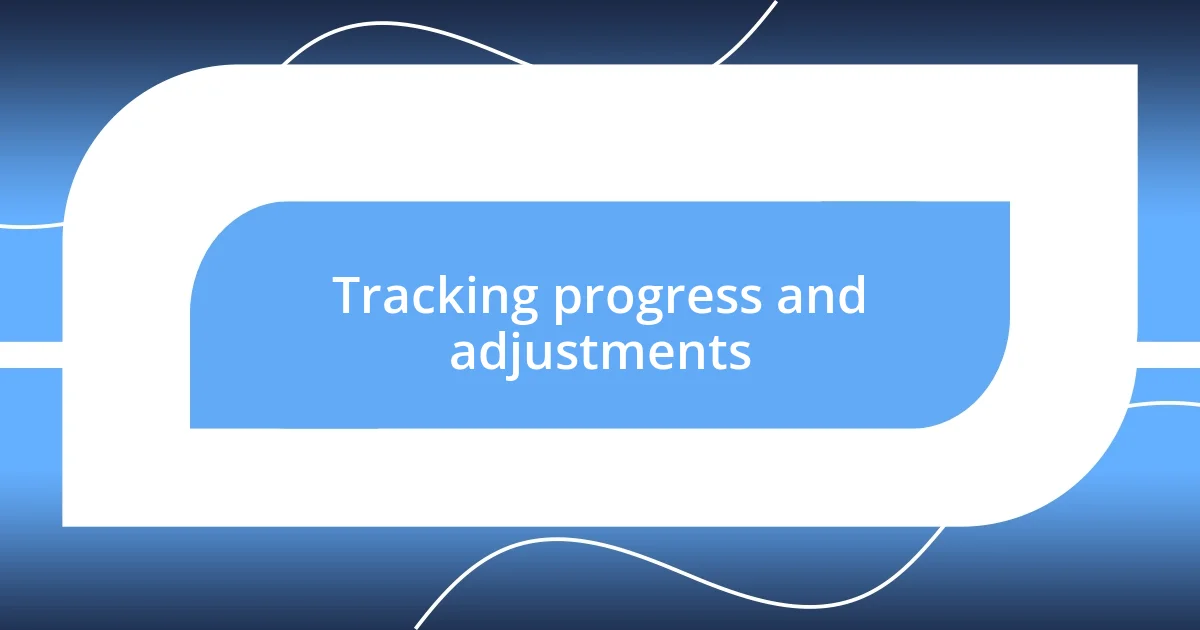
Tracking progress and adjustments
Tracking my progress has been a vital part of my language practice. I remember the first time I set up a simple spreadsheet to note my vocabulary retention and speaking fluency. At first, it felt tedious, but soon, seeing those little improvements highlighted on screen ignited a sense of accomplishment. Isn’t it fascinating how visuals can motivate us? Those moments fostered a deeper connection to my growth, propelling me to push further.
Adjustments are just as crucial as tracking. When I realized that I was lagging in listening comprehension, I made it a priority to integrate more podcasts into my routine. It was challenging at first, trying to follow the conversations, but I learned to embrace the struggle. I began noting specific phrases or terms that stumped me, which led to targeted practice sessions. This proactive approach not only boosted my listening skills but also alleviated some frustration—experiences like that can really transform your learning journey, can’t they?
One of the most rewarding parts of tracking my progress was revisiting my earlier recordings. The first time I listened to a conversation from a few months back, I could hardly recognize my own hesitations and mispronunciations. It was a mix of embarrassment and pride. By documenting my sessions and reflecting on them, I was able to celebrate those small victories while also identifying areas for growth. With every adjustment, I felt more confident in my journey, proving to myself that progress is often hidden in the details. Don’t you think it’s important to celebrate those little wins?
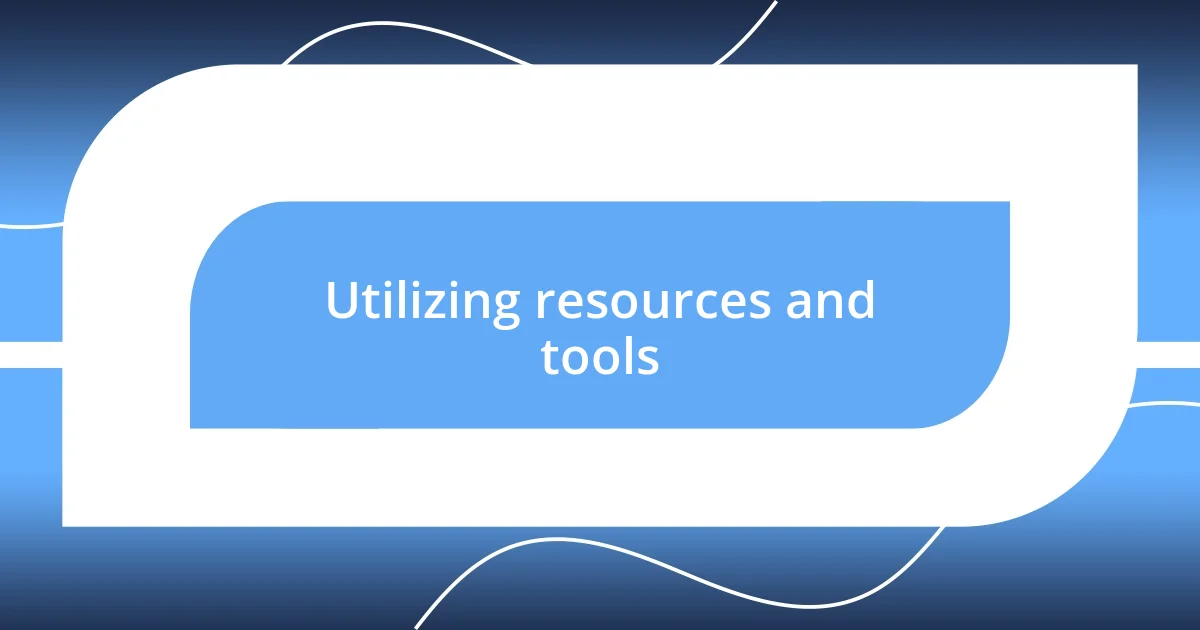
Utilizing resources and tools
In my experience, leveraging various resources truly transformed my language practice. I often found myself diving into mobile apps for on-the-go learning, and one standout was an app that paired vocabulary-building games with real-life scenarios. I still remember the rush of excitement when I unlocked a new level, as that sense of achievement made those daily lessons feel like an adventure. Aren’t those little triumphs what keep us motivated?
Additionally, I turned to YouTube for immersive content, finding channels that focus on practical conversation skills. I vividly recall binge-watching videos of native speakers discussing their hobbies; it not only helped me pick up colloquial phrases but also made the language feel more alive. Observing their body language and gestures added another layer to my understanding. Have you ever watched a video and felt like you were part of the conversation? It’s a magical connection.
To supplement my studies, I also immersed myself in language exchange platforms where I could chat directly with native speakers. One memorable exchange was with a brilliant artist who shared her creative process while we practiced our languages. I felt a blend of excitement and nervousness as we discussed art—every interaction boosted my confidence. It’s remarkable how real conversations can open doors and enrich vocabulary in ways textbooks simply can’t, wouldn’t you agree?
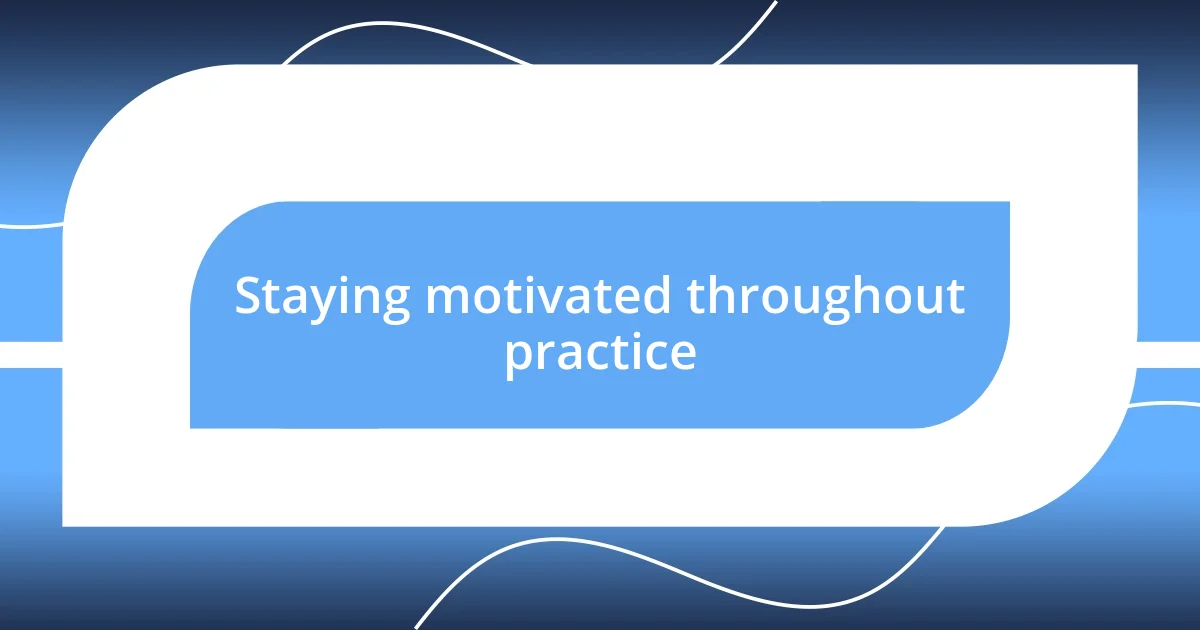
Staying motivated throughout practice
Staying motivated during language practice sessions can be a bit of a rollercoaster. I remember days when I felt like I was speaking in circles, and it was exhausting. To combat that, I started setting smaller, more achievable goals for myself, like mastering five new words each week. Celebrating those mini-milestones gave me a boost, almost like a little party for my brain. Have you ever tried rewarding yourself for small wins? It really helps keep the momentum going.
Another tactic I found invaluable was creating a routine that fit naturally into my day. Morning coffee became my dedicated time for language podcasts, and I often found myself excited to start my day this way. It turned practice from a chore into something rewarding, and I actually looked forward to it—imagine that! I still recall those moments when I’d be so engrossed in a podcast that I’d forget about the world around me. Don’t you think finding joy in unexpected moments is what makes learning truly enriching?
I also discovered the power of community in staying motivated. Joining a local language group transformed my practice into a social event. I remember that first meet-up feeling nervous, yet the supportive atmosphere helped dissolve my anxieties. As we exchanged stories and helped each other with language skills, it wasn’t just about learning anymore; it became about connection. Have you ever felt that sense of camaraderie? It’s exhilarating how shared experiences can fuel personal growth and make the journey feel more vibrant.








